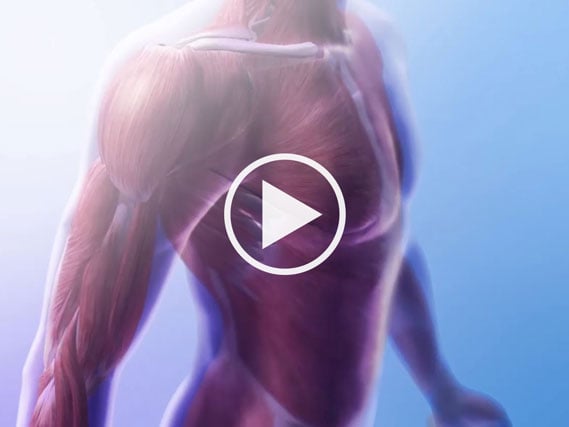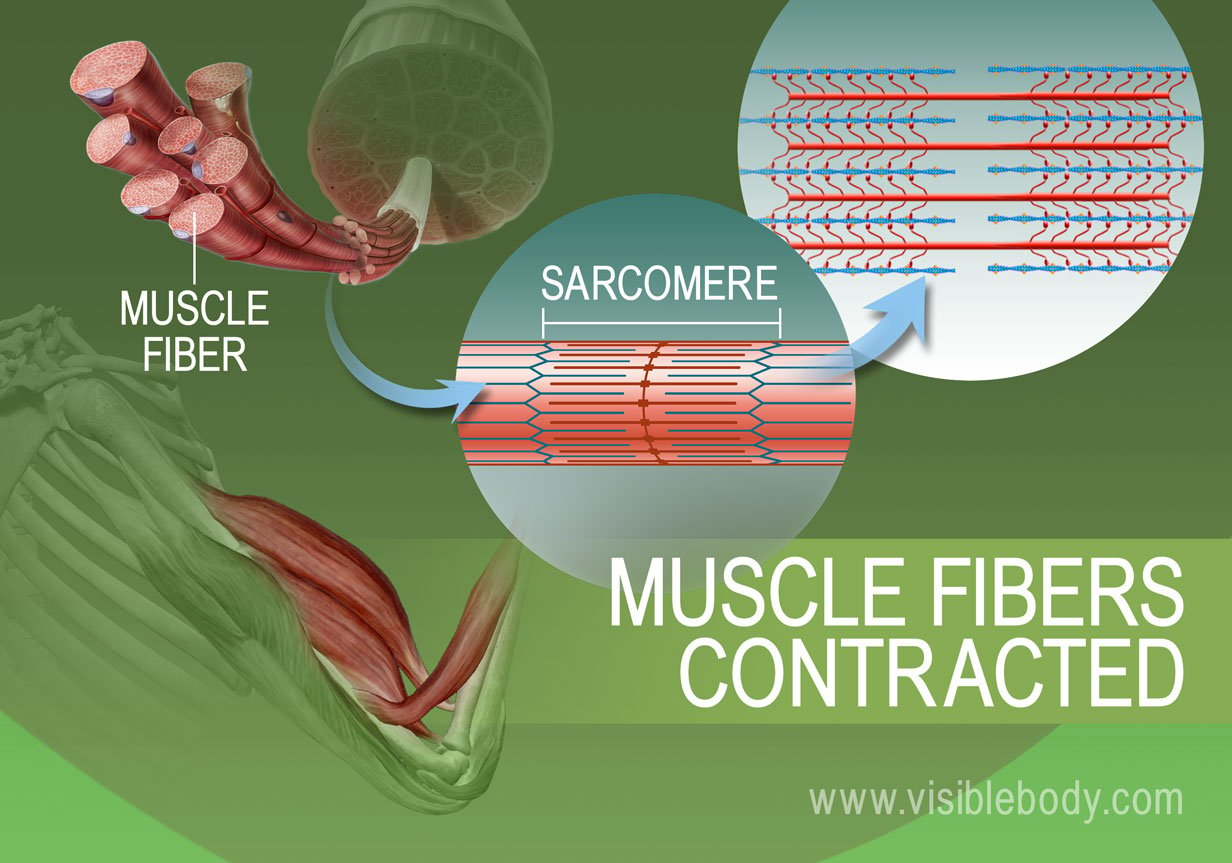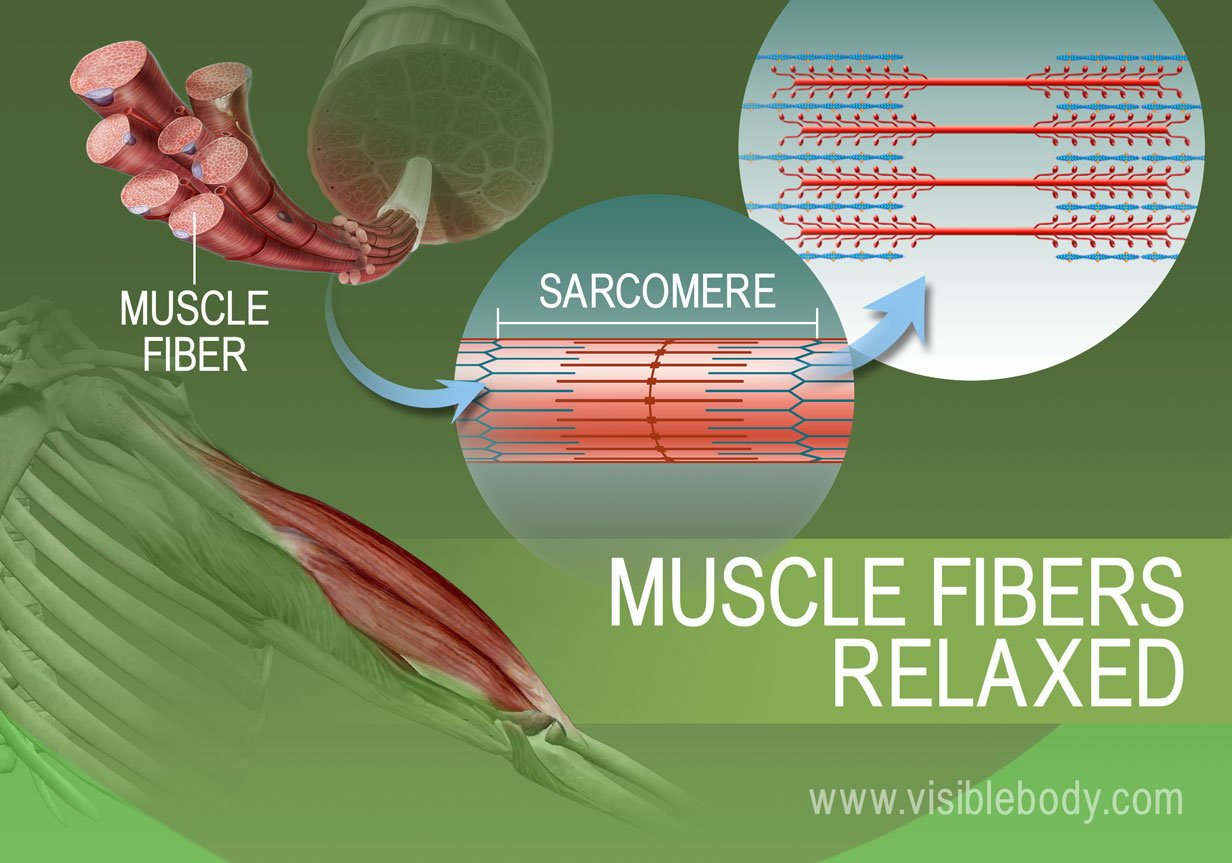
How do the bones of the human skeleton move? Skeletal muscles contract and relax to mechanically move the body. Messages from the nervous system cause these muscle contractions. The whole process is called the mechanism of muscle contraction and it can be summarized in three steps:
(1) A message travels from the nervous system to the muscular system, triggering chemical reactions.
(2) The chemical reactions lead to the muscle fibers reorganizing themselves in a way that shortens the muscle--that’s the contraction.
(3) When the nervous system signal is no longer present, the chemical process reverses, and the muscle fibers rearrange again and the muscle relaxes.
Let’s look a little more closely at the steps in the mechanism of muscle contraction.

Muscle contraction begins when the nervous system generates a signal. The signal, an impulse called an action potential, travels through a type of nerve cell called a motor neuron. The neuromuscular junction is the name of the place where the motor neuron reaches a muscle cell. Skeletal muscle tissue is composed of cells called muscle fibers. When the nervous system signal reaches the neuromuscular junction a chemical message is released by the motor neuron. The chemical message, a neurotransmitter called acetylcholine, binds to receptors on the outside of the muscle fiber. That starts a chemical reaction within the muscle.

A multistep molecular process within the muscle fiber begins when acetylcholine binds to receptors on the muscle fiber membrane. The proteins inside muscle fibers are organized into long chains that can interact with each other, reorganizing to shorten and relax. When acetylcholine reaches receptors on the membranes of muscle fibers, membrane channels open and the process that contracts a relaxed muscle fibers begins:

When the stimulation of the motor neuron providing the impulse to the muscle fibers stops, the chemical reaction that causes the rearrangement of the muscle fibers' proteins is stopped. This reverses the chemical processes in the muscle fibers and the muscle relaxes.
A video by Armando Hasudungan on YouTube detailing the structure of skeletal muscle.
“The Sliding Filament Theory of Muscle Contraction” by Jacob L. Krans, Ph.D. on Scitable.
Visible Body Web Suite provides in-depth coverage of each body system in a guided, visually stunning presentation.
When you select "Subscribe" you will start receiving our email newsletter. Use the links at the bottom of any email to manage the type of emails you receive or to unsubscribe. See our privacy policy for additional details.